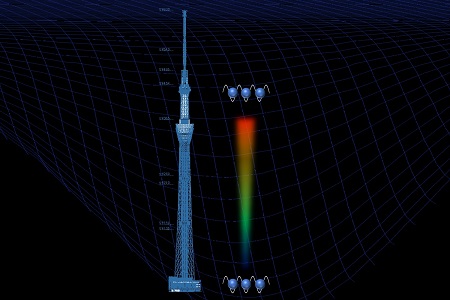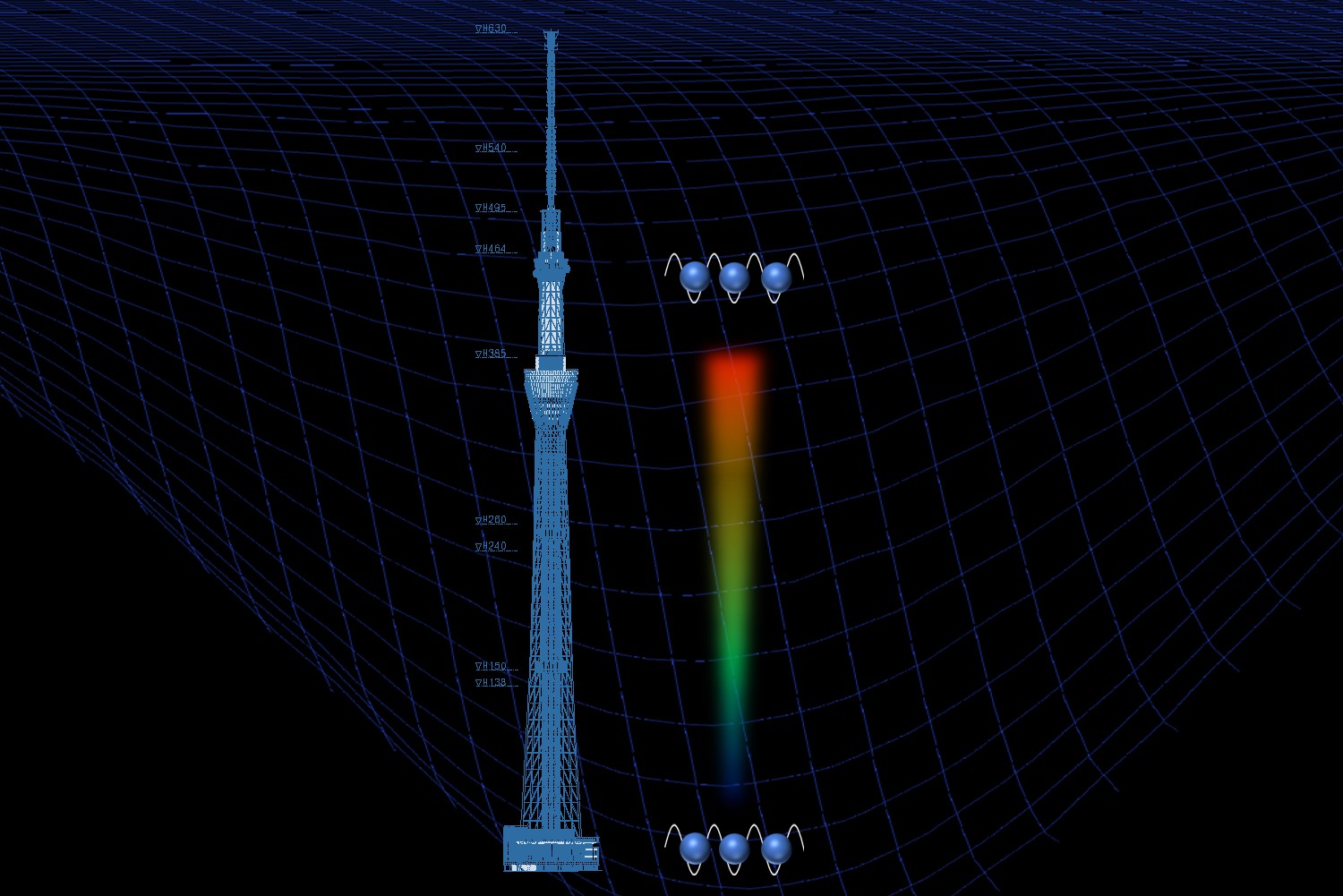Einstein put to the test in Tokyo Ultraprecise clocks measure how time ticks at different rates above ground


Gravitational redshift. The way that time slows down the nearer you are to a massive body like the Earth is called gravitational redshift. © 2020 Katori et al.
Researchers from the Graduate School of Engineering have created the most precise clocks ever used outside a lab and tested them at the Tokyo Skytree tower. One was kept at ground level, the other transported to the observation deck 450 meters up. They successfully recorded the flow of time at slightly different rates, as predicted by Einstein’s famous theory of general relativity. This research opens the door to extremely precise measurements of height that could complement satellite-based positioning systems.
You have probably heard of atomic clocks. These are very accurate time-keeping devices which measure the reliable oscillations of atoms in order to keep time. And as time is such a key property of physics, better measurements of time lead to better measurements of related properties such as spatial positioning or gravitational field strength. Even your smartphone uses atomic clocks in positioning satellites when calculating your position.
As accurate as they are though, established atomic clock designs have been superseded in the lab by newer optical lattice clocks, which could provide a hundred times the precision of the former. With such precision, optical lattice clocks could even measure the way time flows differently depending on how high up you are due to the changing strength of gravity. Optical lattice clocks have now been taken out of the lab to demonstrate this.

Optical lattice clocks. The two optical lattice clocks used in the experiment. © 2020 Katori et al.
“We developed a pair of compact optical lattice clocks that can operate outside the lab. At 450 meters, the Tokyo Skytree observation deck seemed like an ideal place to test the durability of our clocks as well as to test relativity,” said Professor Hidetoshi Katori. “Due to the way gravity effectively slows down time, we expected the lower clock to tick a little slower than the higher one in accordance with Einstein’s prediction. We found exactly that, and are happy to have tested general relativity with precision competitive to expensive experiments usually performed in space.”

Professor Katori and a lattice clock. Professor Hidetoshi Katori and one of the optical lattice clocks his team developed. © 2020 Katori et al.
Previously, Einstein’s theory of general relativity has only been tested in space using satellites or rockets to provide thousands of kilometers’ height difference between atomic clocks. However, ultraprecise optical lattice clocks are able to detect changes in time due to gravity at a distance of mere centimeters.
The fact the test was performed outside the lab is significant as well. It’s the first step towards use of general relativity for real world applications. Special mechanisms to counteract inherent vibrations and noises, from trains for example, further demonstrate optical lattice clocks can find use in the world.
“I wish to see optical lattice clocks used for purposes that can help people,” said Katori. “As they can precisely measure land levels and the variable density of the ground beneath us, we envisage a network of lattice clocks dedicated to the study of seismology and volcanology. As in those disciplines, a means to measure ground density in real time could prove to be an invaluable tool indeed.”
Papers
Masao Takamoto, Ichiro Ushijima, Noriaki Ohmae, Toshihiro Yahagi, Kensuke Kokado, Hisaaki Shinkai & Hidetoshi Katori, "Test of General Relativity by a Pair of Transportable Optical Lattice Clocks," Nature Photonics 14, pages 411–415 (2020): April 6, 2020, doi:https://doi.org/10.1038/s41566-020-0619-8.
Link (Publication )
)





